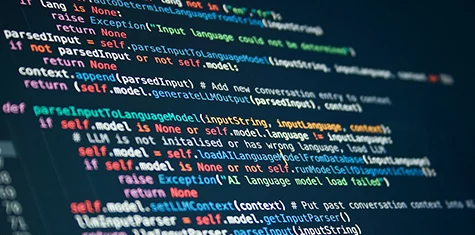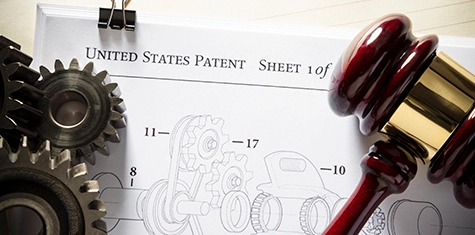Artificial Intelligence (AI) has been used to create significant advancements in technology and efficiencies for businesses and legal teams over the last decade. One of the most significant ways AI has already impacted intellectual property litigation is through enhancing document review and analysis through technology assisted review. News headlines about chatbots such as ChatGPT show the significant growth in this area. As this technology continues to evolve at a rapid pace, generative AI (gen AI), which is a subset of AI, has arrived and will also change the landscape of intellectual property issues and litigation. The basic difference between AI (pattern recognition) and gen AI (pattern creation) is that traditional AI is generally used to analyze data and make predictions, whereas gen AI helps by creating new data based on its training data from large language models.
This article highlights some of the key issues courts are facing with AI in intellectual property litigation.
Copyright Litigation:
Is large-scale scraping of third-party content to train gen AI tools fair use and under what circumstances do AI-generated works infringe on existing copyrights?
Andersen v. Stability AI Ltd., 2023 WL 7132064 (N.D. Cal. Oct. 30, 2023):
- The plaintiffs Sarah Andersen, Kelly McKernan and Karla Ortiz, on behalf of a putative class of artists, allege that Stability AI Ltd. scraped billions of copyrighted images from online sources, without permission, to use as training data to create Stable Diffusion, an AI image product, without consent from the creators of the images or the websites that hosted them.
- The plaintiffs allege that Stable Diffusion is a “software library” providing “image-generating services” to products produced and maintained by the defendants including DreamStudio, DreamUp and the Midjourney Product.
- According to the plaintiffs, consumers use these products by entering text prompts into the programs to create images “in the style” of artists. The plaintiffs claim that the new images are based entirely on the training images and are “derivative” of the training images. However, the plaintiffs conceded that none of the image outputs “is likely to be a close match for any specific image in training data.”
- The plaintiffs filed a class action lawsuit against the defendants Stability AI Ltd., Stability AI, Inc., Midjourney, Inc., and DeviantArt, Inc. for: Direct and vicarious copyright infringement under 17 U.S.C. § 501; Violation of the Digital Millenium Copyright Act (DMCA), 17 U.S.C. §§ 1201-1205; Violation of the plaintiff’s statutory and common law rights of publicity, Cal. Civ. Code Section 3344; and Violation of unfair competition law, Cal. Bus. & Prof. Code §§ 17200, et seq.
- In their motion to dismiss, the defendants argued that the models do not copy or store any images, copyrighted or otherwise, but rather, just analyze the properties of online images to generate parameters that were later used to assist the gen AI model in creating new images from text prompts, as opposed to copying any portion of the underlying images used for training.
- On October 30, 2023, the court largely granted the motion to dismiss with leave to amend. However, the court allowed Andersen’s copyright infringement claim to proceed for registered works against Stability, acknowledging the plausibility that they were included in the training datasets.
- The court found that the allegations that Stability “downloaded or otherwise acquired copies of billions of copyrighted images without permission to create Stable Diffusion” and used those images to train Stable Diffusion were sufficient to state a direct infringement claim.
- Resolution of this question will certainly involve consideration of the doctrine of fair use, which protects certain unauthorized uses of copyrighted works – i.e., use that transforms an original work into something sufficiently different – against copyright infringement claims.
Key Takeaways:
- Copyright owners should seek legal advice to make sure their copyrights are protected and identify potential claims for misuse of their work in gen AI models.
- Companies using gen AI should carefully assess risks of using an AI model and whether it generates transformative outputs.
- Companies should also assess whether its use of gen AI complies with copyright laws and seek legal advice on the possibility of obtaining the appropriate permissions or licenses for the use of copyrighted material.
Patents:
Are inventions created by AI or in conjunction with AI assistance eligible for patent protection? Can AI be an “inventor” under U.S. patent law?
Thaler v. Vidal , 43 F.4th 1207, 1213 (Fed. Cir. 2022), cert. denied, 143 S. Ct. 1783 (2023):
- Stephen Thaler filed two patent applications with the United States Patent and Trademark Office (USPTO) naming an AI software system called DABUS (Device for the Autonomous Bootstrapping of Unified Sentience) as the sole inventor for both applications.
- The USPTO rejected the applications, finding them incomplete for lack of a valid inventor. Thaler sought judicial review and the district court agreed with the USPTO’s conclusion and denied inventorship status to DABUS. The district court found that Congress intended to limit the definition of “inventor” to natural persons or human being.
- Thaler appealed to the Federal Circuit and argued that AI inventorship would increase innovation, encourage AI development, and encourage commercialization and disclosure of information for inventions created by humans and AI.
- The Federal Circuit affirmed the district court’s decision, holding that the Patent Act clearly and unambiguously requires that the inventor of a patent be a natural person or “human being.”
- The Federal Circuit explained that the Patent Act defines an inventor, whether singular or joint, as an “individual” (35 U.S.C. §§ 100(f), (g)) and highlighted that Supreme Court precedent shows that an “individual” ordinarily means human being.
- However, the Federal Circuit left open the question of “whether inventions made by humans beings with the assistance of AI are eligible for patent protection.”
Key Takeaways:
- As the law currently stands, an AI system cannot be the inventor of record on a patent because the Patent Act requires that an inventor of record be a human being.
- After the Thaler decision, there is still uncertainty around AI inventorship. The Federal Circuit implied that inventions made by human beings with the assistance of AI are eligible for patent protection. But how much assistance by AI is too much for patentability?
- A company’s ability to get a patent is a very important method for protecting its intellectual property and obtaining a competitive advantage in the marketplace and this will only increase with companies that develop and use AI technology.
- Companies should seek legal advice regarding patent protection involving AI, but also consider other ways to protect its inventions generated by AI such as trade secrets.



